Michael Fumento
Factual · Powerful · Original · Iconoclastic
A Nine-Year Retrospective of Fear and (Mostly) Loathing
January 01, 1998 · Michael Fumento · Aids 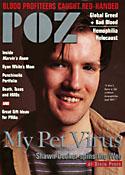
Maybe POZ stands for ”Positively Chicken.”Author’s note: This article was originally solicited by a magazine called POZ, which is edited by and written for homosexuals. I couldn’t believe they were that gutsy. "Don’t pull any punches," they told me. "We want to hear what you have to say." Well, I didn’t but they didn’t – have the guts, that is. For well over a year they kept saying they were putting it off one issue. Finally, it became apparent they did NOT have the guts. Maybe they never did and in the words of Bob Dylan, they "just kind of wasted my precious time." The article appears here in July 2000 for the first time. Please note that all data were current to late 1998.
Nine years ago, January 1990, my book The Myth of Heterosexual AIDS came out. The Advocate said it "will undoubtedly become the most important nonfiction book on AIDS since Shilts’s And the Band Played On and Paul Monette’s Borrowed Time," while the Journal of the American Medical Association called it "thoroughly researched, poignantly written, and a must-read for anyone interested in learning the dynamics of the HIV epidemic."

Michelangelo Signorile: Professional Spoiled Brat
Michelangelo Signorile, conversely, labeled its author a "HATE-FILLED, UNTALENTED, LYING LOSER" (Emphasis his) and called upon gays to send threatening and nasty messages to a Newsday editor who had dared run a book review of mine. But call the author what you will, assign to him whatever motives your imagination can conjure up, yet grant this: On the subject of how the AIDS epidemic would play out, Myth and its author were right. Which is to say the pundits, almost everyone in the media, and all of our highest-ranking public officials were wrong. Here’s why.
Early Warning Signals

Before she was selling diet books that she herself couldn’t stick to, she made herself an expert in epidemiology.
Nineteen-ninety was a marker year for many AIDS predictions, all of which proved grossly exaggerated. By 1990, Oprah Winfrey had claimed three years earlier, one-fifth of all heterosexuals would be dead of AIDS; by 1990, Gene Antonio wrote in his 1985 bestseller The AIDS Cover-UP? 64 million Americans would be dead or dying of AIDS. Antonio missed the mark by a little over 63 million and Oprah by appr oximately one-fifth of the heterosexual popula-tion. At a time when AIDS cases are dropping, death rates are plummeting, and people speak in muted voices of the possibility that the disease may no longer be inevitably fatal due to new drug therapies, those numbers seem ridiculous. But as silly as they may seem now, back then they had many people terrified.
To be sure, Oprah is just a talk show host – albeit an incredibly influential one. As to Antonio, he was the sort of person even a raving alarmist and homophobe would label a raving alarmist and homophobe. Yet even reputed authorities spewed vastly overblown predictions. In 1989, the U.S. General Accounting Office projected from 300,000 to 480,000 cases of AIDS in the country by the end of 1991, which the media naturally converted to "as many as 480,000 cases." Surgeon General C. Everett Koop, who coined the term "heterosexual AIDS explosion," quickly embraced the figures. In fact, even by the end of the next year, 1992, the country was nowhere near the bottom of the GAO’s range for 1991. It’s not just that the GAO happened to be wrong, but that there was never the slightest possibility it could be right. As I noted in Myth, "For the GAO projections to be accurate, the trend of cases coming in at ever slower rates would have to suddenly reverse itself and there would have to be an explosion of new cases," adding that nothing in the GAO report argued that any such thing could happen.

No crystal ball was needed to see the epidemic was grossly hyped.
But how did I know this? Not by an special genius or insight. I didn’t consult a crystal ball, an Oracle, or stick my hand into the entrails of a freshly-killed chicken and feel around. Rather, I applied a rule that anyone who knows the least bit about infectious disease epidemiology knows. New disease outbreaks inevitably follow a curve. When they begin, they go up at a rapid rate. As new cases are harder and harder to cause, the epidemic rate slows to a point where the curve finally peaks. Then cases begin to decline. Sometimes the disease goes away entirely; other times it flattens off at what’s called an "endemic" level. Sometimes the epidemic curve has a fairly neat bell shape; other times it has a long "tail" or conversely drops off like a cliff. But the ascent, the plateau, and the decline occur with all infectious disease epidemics.
One of the last books published in 1990 on AIDS had the ominous title, The AIDS Disaster. It called for massive, no-holds barred spending on AIDS at a level the authors admitted would guarantee a great deal of waste. This, they said, was vital to contain an epidemic growing by leaps and bounds. Yet the growth in the epidemic had already slowed tremendously from just a few years before. There was already evidence that many of the early projections were already proving, well, disastrously wrong.
U.S. News & World Report, in 1987, ran its first cover story on AIDS, featuring a photograph of a man and a woman, both white and dressed in white-collar business attire. (The man is a dead ringer for Dan Quayle). While perhaps not quite so sensational as Life magazine’s 1985 cover blazoned with the large red letters "NOW NO ONE IS SAFE FROM AIDS," U.S. News’s "AIDS: At the Dawn of Fear" declared, "The disease of them suddenly is the disease of us. . . . a plague of the mainstream, finding fertile growth among heterosexuals."
By 1991, it said, "according to the most conservative estimates, 270,000 people will have been stricken (this was the federal Centers for Disease Control and Prevention (CDC) estimate, later bumped up to 295,000), 179,000 will have died – and new cases involving heterosexuals will have multiplied 10-fold to 23,000. Almost 4,000 babies will have contracted the disease by being exposed to the virus while in their mothers’ wombs. The [CDC] estimates that 1.5 million Americans now carry the virus but display no symptoms. Others think that number may be as high as four million."
Actually, the CDC had presented a range of 1 to 1.5 million and the magazine never identified the "others" whose predictions were darker still. As to numbers for which we had real figures, by the end of 1991, total AIDS cases stood at 206,400, deaths at 133,000, the "heterosexual contact" category stood at 12,000, and the number of babies diagnosed with AIDS who contracted it through their mothers was under 3,000.
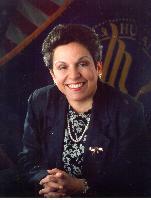
Donna Shalala: the nation’s top health official – and deceiver about AIDS.
Even though the epidemic was clearly peaking, the fearsome rhetoric did not abate. Indeed, in some sectors it even increased, perhaps for the same reason guerrillas will turn away from attacking armies and towards anti-civilian terrorism when they realize they cannot win on the battlefield. In any case, the better things looked, the shriller the warnings became. Thus the nation’s top health official, Health and Human Services Secretary Donna Shalala, told Congress in February 1993 that without massive intervention, "There may be no one left."
In 1995 she announced a massive television and radio AIDS campaign aimed at young people – primarily heterosexual ones, of course. Shalala claimed, "What we have is a generation in jeopardy." Yet the latest AIDS data then available showed cases declining among young people, with fewer than 3,500 persons aged 13-24 diagnosed in the previous 12 months – less than a third the number in that age range killed in motor vehicle accidents that year. It’s therefore difficult to say why AIDS was putting the "generation in jeopardy."
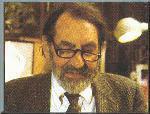
Joseph Sonnabend, M.D.
"One of the things about this epidemic is that those who make pronouncements that are proven to be untrue simply move on," says Dr. Joseph Sonnabend, who has been treating AIDS patients since 1979 and been a caustic observer and commentator on the epidemic almost as long. He told me, "They can be wrong a second, third, and fourth time and still go on."
The Non-Hetero Holocaust
Still, the rule of epidemic curves could hardly tell us whether AIDS would become the heterosexual threat that we were repeatedly told it would be or, indeed, already was. "AIDS is breaking out," claimed sex therapists William Masters, Virginia Johnson, and Robert Kolodny in a much-publicized 1988 book that horrified even the worst of AIDS alarmists like Dr. Mathilda Krim, then the chairwoman of the American Foundation for AIDS Research (AmFAR). "The AIDS virus is now running rampant in the heterosexual community," the authors claimed.
But once again, there was hardly a need to go about that nasty business of feeling chicken entrails to see that the disease would never make significant inroads into that part of the heterosexual population with little or no contact with intravenous drug abusers. This time it was just a matter of applying a simple rule: For any epidemic to spread, 100 cases must lead to at least 101 more. If they lead to only 99, the epidemic starts to fall back on itself. Again, this applies to all infectious diseases and has been known for over a century. Suddenly it somehow was forgotten.
So the pertinent question was, are 100 cases leading to at least 101? Simple observation very early on told health authorities that it wasn’t. Almost invariably, non-drug abusing heterosexuals were being infected by drug-abusing ones. Yet this distinction of who was infecting heterosexuals was simply ignored not only by the media but by many public health departments. In 1987 I called such departments in many major cities and they didn’t even know what I was talking about. The question had simply never come up.

New York City carefully tracked its alleged heterosexual male AIDS cases – and found it had virtually none.
The major exception was New York, where officials knew this was indeed the most crucial question regarding how far the epidemic would spread. As a result, they made it a policy to carefully interview all men who claimed to have been infected by a woman. They found that practically nobody fell into this category. Indeed, one of the few men they were convinced truly had no risk factors other than vaginal intercourse proved to have been a minor actor in gay pornography!
Thus while other health departments were reporting female-to-male transmissions left and right (and do so to this day) simply because whenever a man said he got HIV from sex with a woman they took his word for it, New York was screening these people out with careful interviews. Later it scaled back and then essentially ceased the interviewing process, inevitably leading to New York male "heterosexual transmission" cases going through the roof.
"I was appalled," said Sonnabend, who had worked for the Department of Health in the 1970s. "A number that was about 18 suddenly became 400 or 500, just because they stopped interviewing."
Still, if you looked at the handful of female-to-male transmission cases in New York while interviewing was still going on, and knew that New York had more AIDS cases than any other city in the country, it was clear that if such transmission were so rare there it would be rare everywhere. Case closed. You didn’t even need to know how efficiently men infected women. The lack of infection going back the other way essentially constituted a disease "firebreak."
But as time went on, which is to say after I published my first AIDS article saying all this in 1987, the statistical evidence did come in supporting that simple observation. This came from partner studies, in which sexually-active couples were observed (no, not literally) to see how often the infected person transmitted the virus to his or her partner. In the great majority of these, the originally infected person was a man. These found that about 20 percent of the time per relationship, the virus was transmitted from man to woman.
In the largest of these studies, by Nancy Padian of the University of California, Berkeley, this came out to about one infection per 1,000 acts of intercourse. To be fair, some of these couples were using condoms. On the other hand, others were engaging in anal sex, well-established as a more efficient transmitter of HIV than vaginal intercourse. Padian’s latest and probably final study came out in 1997 and showed 19 percent of female partners were ultimately infected over 10-year period.

Nushawn Williams became a media cause celebre precisely because he was the exception to the rule.
This indicates clearly that from man to woman, HIV nowhere approaches the level of infectiousness needed for spread. It tells us that heterosexual transmission was, is, and always will be essentially transmission from somebody in a high-risk group (generally an intravenous drug abuser, though the media is wont to blame bisexuals) to somebody without those high risks. Then it rarely goes further. And that’s the more efficient direction; man to woman.
What about woman to man? The first such partner study was again conducted by Padian. It found that of 41 originally uninfected men, over a period of years only one became positive and that relationship involved "over 100 episodes of vaginal and penile bleeding." Her 1997 final report found two of 82 male partners had become infected, for a transmission rate of 2.4 percent over 10 years.
Padian’s final report put female-to-male trans-mission efficiency at about one-eighth the rate for going in the opposite direction. Other studies have since confirmed this. Again, when it takes 100 people to infect at least 101 for an epidemic to spread, one infected man per 42 who were regularly exposed to the virus is not going to do the trick.
Yes, there will be exceptions to these transmission patterns, such as Nushawn Williams, who in 1997 was found to have infected about a dozen teenage girls in New York state. And you will hear about them, for the same reason you always hear about U.S. airliners that crash and never hear of the ones that land safely. Don’t look for headlines reading "HIV-positive Man Has Sex with Hundreds of Women, Infects None." And yet we know there must be such cases.

Magic Johnson – one man makes an epidemic.
But the media, the government, and the AIDS alarmists in general wanted to hear none of this. The media used every trick in the book – and some that weren’t – to create the appearance of a growing heterosexual epidemic. If they couldn’t get an epidemiologist or even a medical doctor to say something they wanted, they would instead get a juicy quote from an AIDS victim, who somehow by virtue of having the disease was an automatic expert in all areas relating to it.
Since the numbers weren’t on their side, the media tried time and again to build an entire epidemic around a single heterosexual, such as the late Alison Gertz. Ms. Gertz, who claimed to have gotten the disease through a single tryst with a bisexual, was among other things, profiled in The New York Times, on the cover of People magazine, and had a TV movie made about her. It was so delicious: Jane Everywoman had AIDS. Nobody seemed bothered by the inherent contradiction that if she were truly one among many, she wouldn’t have gotten any attention at all, much less the massive amount she did get.
Likewise, Magic Johnson was used to represent an entire heterosexual epidemic, notwithstanding that we really don’t know how he contracted the virus and that long before he announced he had HIV he was widely rumored to have been bisexual.
In one instance, USA Today proclaimed in a headline, "Women Are 12 Times More Likely to Get AIDS." Its source? A Yale psychologist. It didn’t say 12 times more likely than what, but no comparison could make the assertion valid. That’s why it needed somebody speaking outside their field. If you’re looking for somebody to assert the Jamaican bobsled team is going to win the gold medal in the next Winter Olympics, you don’t go to a bobsledding expert. Instead, you go to somebody who’s completely ignorant in the field – a football coach, perhaps. Better yet, a bus driver or a mathematics professor.

If he’s willing to say the "right" things, make him an AIDS expert.
"Who can protect the public but the journalists and they’ve been an incredible disappointment," says Sonnabend. "Instead of digging and doing investigative research, they just take press kits and have Rolodexes filled with celebrity names."
Sex, Lies, and Florida’s Faux Heterosexuals
Yet then, as now, while even the CDC’s statistics didn’t show the epidemic the alarmists repeatedly claimed they did, the data nevertheless suffered a huge flaw which the agency has clearly acknowledged – and even proved – internally but never acknowledged outwardly. Its definition of "heterosexual transmission" actually means nothing more than that’s how the person claimed to have gotten the disease. If a man diagnosed with AIDS has had anal sex with 1,000 men and shared needles on 500 occasions, and he tells his local health department he had no risk factors other than sex with a woman, he would go straight into the heterosexual transmission category. Again, it hardly takes the proverbial rocket scientist to know that a lot of men are going to be embarrassed to admit to homosexual activity or worried about admitting to illegal drug usage and would simply deny these risk factors.
The CDC knows this from common sense and from history. At the turn of the century, it was common to blame contracting syphilis on touching doorknobs, using public toilets, or drinking from cups left at public fountains. The CDC also knows it from the New York City experience back when its health department still conducted individual interviews with men, and it knows it from its own research.

Florida’s heterosexual AIDS epidemic proved groundless. s It was the CDC itself that sent epidemiologists to Florida to find out why that state contributed so many cases to the heterosexual transmission category. Their study, published in the American Journal of Public Health in 1993, described how they analyzed the cases categorized as "heterosexual transmission" in two southeastern Florida counties and found, just by going through the patient files, that about a fifth had been misclassified. For example, a diagnosis of anal gonorrhea in a man is a pretty good presumptive indicator of homosexual activity, and many of the male "heterosexual transmission" cases had medical records indicating treatment for this. Although some were unavailable for interview (presumably having died), most were and some of these were also reclassified based on their own admissions. Ultimately, of the non-Haitians, slightly over half of the presumed heterosexual men were reclassified, as were over ten percent of the women. An additional third of the men re-interviewed but not reclassified had evidence of anal disease that may or may not have been caused by sex with another man.
There is no reason to believe that Florida’s recording system is any poorer than that of most states, therefore no reason to believe that if the CDC looked closely at cases categorized as heterosexual transmission in the other 49 it wouldn’t come up with similar findings. This would be more consistent with the evidence from Nancy Padian’s study. There ought to be a big fat asterisk next to the "heterosexual transmission" category in the CDC’s semi-annual HIV/AIDS reports, with the footnote stating: "This is based strictly on the assertions of the diagnosed person and has not been confirmed."
Shooting the Messenger
Despite – or because – of my reliance on statistics and tried-and-true rules of epidemiology, I was accused of "homophobia" so many times I could exhaust the batteries in a calculator trying to add them up. Gays who supported me or my general position were accused of being traitors or suffering self-loathing. Sonnabend, for his part, says he was tossed out of AmFAR, a group he established in his own office, over his refusal to go along with what would later be expressed in the foundation’s famous slogan: "AIDS Is an Equal Opportunity Destroyer."
As for me, try as they might, the accusers never seemed able to go much beyond simply tossing the word "homophobe" around or filling their essays with swear words and frothing invective, as Signorile did. They didn’t challenge the statistics or the theory; they merely went after the writer’s motives. Not only was this illogical, in that prejudices hardly invalidate conclusions, but even here the attackers couldn’t find anything legitimate in a whole book to latch onto.
The best they could do was to quote it out of context, such as the constantly repeated claim that Myth claimed gays were "the rats and fleas" of the AIDS epidemic. This is what the expression "quoted out of context" means. The context was a warning to gays that heterosexualizing the epidemic could backfire because they would be blamed for introducing the disease into the straight population. I wrote, "By asserting that AIDS is not a localized epidemic but one that, while hitting them first, was destined to hit everyone, homosexuals perhaps even increased their stigma. For now not only were their sexual practices and life styles in general looked upon with suspicion or outright disgust; but, indeed, they were setting themselves up as the rats and fleas of the new plague." This makes me a homophobe? This merits a hard kick in the short ones?
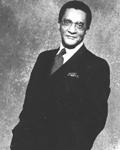
Tony Brown – the very title of his book shows his disdain for "true" truths.
Not that gay activists were the only mudslingers. I was accused of being anti-Latino because I noted that Hispanics disproportionately contracted AIDS. One woman asked how I could dare do such a thing when I’m Latin myself. (I’m actually half Italian, half Jewish). I was accused of being anti-black for the same reason. Black talk show host Tony Brown accused me of racism in his 1995 book, Black Lies, White Lies: The Truth According to Tony Brown. He claimed I said that blacks were genetically more inclined to get AIDS than whites. Actually my book stated clearly that at present there was no evidence of this. Since then, evidence has indicated blacks are slightly less protected from contracting HIV. It was only fitting, one supposes, that I be blasted for saying something I didn’t say, that even if I did say it it would hardly make me a bigot, and that ultimately proved true.
And by the way, no apologies for pointing out that the epidemic was going in the direction of blacks and Hispanics. In my first writing on the subject, Commentary magazine of October, 1987, I warned of the disproportionate attention paid to whites and not to minorities. In Myth I devoted a whole chapter to it: "The Agony of the Underclass." A decade later, here are the startling figures.

Maybe fabricating scary figures helps sell books.
In the December 1997 issue of POZ, former Surgeon General Jocelyn Elders claimed, According to the CDC, 90 percent of the AIDS cases under age 20 are among girls." In fact, the latest CDC AIDS data showed that males under age 20 with AIDS outnumbered females by 5,921 to 4,934. She claimed further that probably most of these females were infected through sex with men. But over three-fifths of them were under the age of five – not likely candidates for having gotten the disease through sexual intercourse.
I even pulled one story off a newspaper computer database that read, "AIDS Infection Rate Up Among Women; Killing Said Work of Jealous Lesbians." As it happens though, it was a mistaken combination of two headlines.
If You Can’t Find It at Home...
Another trick we’re increasingly seeing is a blending of the U.S. AIDS epidemic and the worldwide pandemic. It’s one thing for the U.S. to donate CDC resources to foreign nations with sudden disease outbreaks, as we did a few years ago with Ebola or last year with the so-called "Hong Kong avian flu." Nor is this to say we shouldn’t care about our brethren in Africa or Thailand or anywhere else. But if that’s our concern, our top worry should be not AIDS but rather diarrhea, respiratory diseases, and malaria – illnesses that kill very few Americans but are the largest killers worldwide and are usually easily and cheaply treatable.
The purpose of focusing on bad news abroad is to distract from good news here. The point was made nicely by the title of a 1996 letter to the editor from CDC’s AIDS director Dr. Helene Gayle: "Let’s Safeguard Everybody from AIDS; Heterosexual Transmission is a Risk Worldwide." The assertion is true, but no truer than saying that malaria is a risk worldwide. That hardly means that a country with only a few hundred malaria cases a year should put itself on par with countries where malaria is a leading cause of death.
As a medical journalist, I can say with authority that the CDC has some of the best, most scrupulous researchers in the country. But those are the career people, not the political appointees. The words of one CDC researcher who isn’t in the AIDS section and declined (most strongly) to be identified, apply to all sectors of our Public Health Service. "If they’re high up in the AIDS part of the organization, they almost have to be one of the bad guys."
Mad Max Essex
Among the very few non-government AIDS doctors left toeing the doomsday line today, none stands out more than Dr. Myron (Max) Essex. Essex has been on the AIDS research gravy train since pretty much the beginning. Indeed, he was instrumental in leading Dr. Robert Gallo’s team down the wrong path in trying to identify the AIDS virus when he claimed to have found the leukemia-causing retrovirus HTLV-I in about 30 percent of AIDS patients or those who had early symptoms of AIDS. We now know HTLV-I is almost never found in AIDS patients.
Essex has been pushing the heterosexual breakout line since at least 1987. When it comes, he warned, "People will start to panic." But the cries of panic didn’t reach the proper crescendo, so he began shouting fire in a crowded theater. He claimed, to any reporter or paperboy who would listen, that he had found a strain of HIV in Africa and Thailand that allegedly spread much more easily through vaginal sex and anal sex, as well. The HTLV-I fiasco was instantly forgotten, as the headlines attested: "Scientists Warn of ’Super’ AIDS Bug" (London Daily Telegraph), "New HIV Epidemic May Be on the Horizon" (Sacramento Bee), "Faster-Spreading Strain of AIDS Is Found Overseas" (Chicago Tribune), "New AIDS Risk Ahead" (London Guardian), "Researcher: 50-50 Chance of New HIV Epidemic in U.S." (AIDS Policy and Law), and "Heterosexual AIDS Epidemic Could Expand in U.S., Europe," (Infectious Disease Weekly). The first line of an article in one newspaper claimed, "Mutations in the AIDS virus may soon allow it to make a devastating new sweep through the heterosexual populations of the West," adding, "One of the most worrying predictions was provided by Dr. Myron Essex of the Harvard School of Public Health."
The projection becomes just a bit less worrying when you find out that Essex first broadcast his warning in February of 1993, that it wasn’t until two years later that the first subtype E cases were found in the U.S., that all three of the persons had had sex with Third World residents, and that six years later subtype E has yet to begin cutting that great big swath through the U.S. and Great Britain that Essex had warned us about. Logically, a viral strain that spreads more efficiently would easily jump to other countries around the world and once there readily expand its domain. Subtype E simply hasn’t done so.
In the lab, as well, subtype E just hasn’t lived up to its "promise." Back-to-back articles in the October 1997 issue of Virology described two different studies, neither of which could substantiate Essex’s findings. Both essentially came to the conclusion. Stated one, "Our findings do not support the conclusion that subtype E strains have a preference for [penetrating intact cells], suggesting that other explanations for the rapid heterosexual spread of subtype E strains in Asia should be considered." The researchers included some of the heaviest hitters in HIV virology, including David Ho and Robin Weiss. Others, such as AIDS legend Donald Francis and the University of California’s Jay Levy, told me they concurred. But Essex has never retracted his "findings." And he never will.
The Falsehood Fallout
It is the perception among some that heterosexual AIDS is essentially a pass é issue. That unfortunately, is not the case now and won’t be for some time, no matter what AIDS case data show. Thus a survey reported in December, 1997 found that AIDS was American parents’ greatest concern for their children. A survey released just weeks earlier found that AIDS was considered one of the nation’s top two health problems – this though it was the eighth-largest killer then (since fallen to 14th).
AIDS ranked far higher than drug usage, more than twice as high as smoking, and more than three times as high as alcohol abuse. Obesity was mentioned by less than 1 percent of parents. Yet during the last 12 months, 2,486 youths between 13 and 24 were diagnosed with AIDS, a figure that is less than 1 percent of the population and declining. Meanwhile, obesity in children overall has doubled since the 1960s and almost tripled in some minority subpopulations.
The reason for the misperceptions is the same reason there have always been the misperceptions: the media and the government. Thus, when Reuters reported on the survey indicating AIDS was perceived as one of the two top health problems, it claimed this showed they were "unusually well-informed." What, pray, is the definition of "misinformed?"
Yet proper information is needed to make proper decisions. For parents to believe AIDS is their child’s biggest threat is as wrong and as harmful as a man in a New York bathhouse having sex without a condom thinking his biggest threat is being struck by a meteor.

Cash is the name of the game.
James G. Kahn, a University of California at San Francisco epidemiologist, has created a computer model which, he says, shows that over five years, $1 million spent in a high-risk population averts 150 infections, compared with two or three infections if the money is spent in a low-risk population. Moreover, he argues that reducing infections in high-risk groups would "almost certainly" benefit low-risk groups by reducing the pool of people who could potentially infect others.
Then there’s the aspect of research funding. It was probably always the major motivator of AIDS disinformers that making the disease appear "an equal opportunity destroyer" would prime the research pump and keep the spigot wide open. Well, there’s no arguing with success. Anytime there’s a sudden release of research funds, be it for defense contracts or medicine, there’s tremendous waste. Or, to put it a bit less delicately, it’s peed down the drain. Without doubt, there was much wasteful spending on AIDS. Yet it’s unlikely that the new medicines which have done so much to lengthen and improve the lives of people with AIDS and HIV would have come as quickly but for the massive spending.
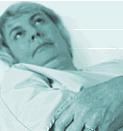
With AIDS on the scene, cancer was no longer part of the discussion.
The downside is that the AIDS advocacy began what is now known as "Disease Wars." AIDS spending cut the number of grants to cancer researchers by about half. Then breast cancer activists copied the AIDS activists, right down to the ribbons, leaving even less money and fewer researchers for all other types of cancer. How many straight and gay men will die of cancer because of these, no one will ever know. (Read also Michael Fumento’s "The Squeaky Wheel Gets The Grease," The American Spectator, December 1998)
"It’s hard to fault" the everybody’s-at-risk advocates, says one of the earliest critics of heterosexual AIDS doomsaying, Joel Hay, chairman of the Department of Pharmaceutical Economics at the University of Southern California. "It’s been very successful. But from a long-term perspective, they may end up on the other side. Maybe making scientific resource [allocation] decisions through the media helped them this time, but next time they could be on the losing side."
To some, the answer is to simply increase all federal disease research funding. "I think all biomedical research should be increased and I’m not willing to engage in ’Disease Wars,’ says Fran Visco, head of the National Breast Cancer Coalition. "The message we give to Congress year after year is the pie has to be bigger."
Indeed, it is being made bigger, but that doesn’t address inherent unfairness in allocations. Objective standards for grant-giving such as numbers of sufferers and mortality rates have been tossed out the window.
"It is a zero sum game," said Dr. Zack Hall, director of the Institute of Neurological Disorders and Stroke at the National Institutes of Health, in a documentary on "Disease Wars." "Any time there’s an increase in one area of research that we have, it must go down in other areas." In the same documentary, Rep. Ernest Istook (R-Okla.) said, "The media pressures and influences depict AIDS as the horrible disease as opposed to being one of many horrible diseases and there is frankly a fear among many members of Congress that they will be depicted as people lacking in compassion if they dare to mention that [these other diseases] afflict far, far more Americans and cost this country far, far more than AIDS does [and therefore] deserve a larger share of the limited money available."

Finally, the credibility of government AIDS officials and the media have been shot through like a piece of Swiss cheese. I cannot say how many people I’ve heard say they cannot accept government pronouncements on obesity – and even cigarette smoking – because of the contempt they developed for our health officials over the heterosexual AIDS issue. I recently appeared on a talk show in which the host said that absolutely nothing the government declared about health issues could be trusted because, after all, the government had lied to us about the risk of heterosexual AIDS. As the person most associated with establishing that, indeed, the government had lied about AIDS, I found myself in a very strange position–hoisted not on my own petard, but rather one that I had sought to prevent from being built.
As to the media, both Sonnabend and I are of the opinion that it largely deserves the rotten reputation it earned with its AIDS coverage. "If it’s happening with AIDS," he says of the media disinformation campaign, "it’s happening with everyone else."
Some day – perhaps soon – AIDS will be curable, preventable by a vaccine, or both. But just as the First World War led to the Second World War which in turn led to a half century of Cold War, nobody can begin to guess when the we’ll see the last of the harm from the disinformation campaign that was the myth of heterosexual AIDS.
